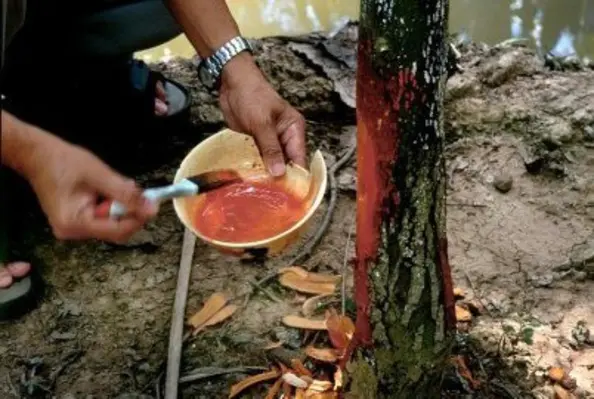Page 5 of 5Citrus
Citrus gummosis can be caused by a number of different Phytophthora species. Infections are most common around the collar and lower trunk portion of the tree because inoculum is invariably splashed up from the soil as spores, although many infections do occur higher up the trunk and even on the main scaffold branches. If left unchecked gummosis will kill main branches and eventually the whole tree as infections progressively encircle the affected trunk area.
Early symptoms include resin-like gum oozing from cracks in the bark which may wash off in the rain or dry, crack and eventually fall off. Otherwise early symptoms are difficult to detect so regular tree inspection is essential. In more advanced stages secondary pathogens invade and cause bark and wood discolouration distinctly darker than the gummosis itself. Early detection and treatment is essential, especially before the disease has encircled 50 per cent or more of the trunk or main branch.
Disease can be halted by scraping off all diseased bark and a buffer strip of healthy light brown or greenish bark around the margins of the infection. Alternatively, affected bark may be scraped more lightly to find the perimeter of the lesion, which is subsequently cauterised with a propane torch to kill advancing fungal mycelium.
All cleaned and treated areas are painted with cuprous oxide canker paint and sealed as described using petrolatum grease. In areas of high disease pressure growers are recommended to paint the bark of healthy trees with cuprous oxide paint as a prophylactic treatment. Cuprous oxide is one of the relatively few chemicals which may be used to control the disease for organically produced citrus fruits.
Orange, grapefruit and pommelo all succumb to Phytophthora bark infections. These can be collar rot infections just above soil level or infections up the trunk and on the main scaffold branches. Infections on the main branches of pommelo in Thailand are associated with copious production of brown and amber coloured resin.
Orange trees suffer from a fruit infection called Phytophthora brown rot caused by spores splashed up from the soil and onto low hanging full fruit. This phase of the disease is controlled by spraying with cuprous oxide. High volume sprays to run off give complete coverage required. Otherwise vulnerable fruit are infected and fall to provide even more inoculum for stem canker infection.
Classic Asian fruitsA wide range of classic and often iconic Asian fruit trees including mango, durian, lychee, longan and apples (at high altitude) all suffer from infections by Phytophthora to cause typical stem canker infections. Water-based canker paints are traditionally used to treat these infections, but farmers in Vietnam, Thailand and Indonesia now use cuprous oxide canker paint mixed as an oil emulsion. Oil emulsion formulations of cuprous oxide have more sticking power and also exhibit penetrative properties allowing the active copper (Cu2+) to move deeper into the wood to prevent localised spread of infection and to kill any residual mycelium. Furthermore, addition of polymers allows the dried canker paint to form a self-sealing water-proof crust over the wound.
By Dr Terry Mabbett





